NOT CRISIS JUNIOR!
A KC COLUMN by KC Carlson
Most comic book fans of a certain age remember Crisis on Infinite Earths. This 12-issue 1985-1986 series from DC Comics was written by Marv Wolfman and pencilled by George Pérez with inks by Dick Giordano, Jerry Ordway, and Mike DeCarlo. Originally, it served DC Comics as a company to both attempt to simplify their fictional universe, as well as define it more consistently by better organizing their out-of-control alternate or parallel universes. But you know what they say about the best-laid plans…
Even if fans weren’t old enough to explore the series then, they probably caught up with it at some point. Crisis (and its companion publication Who’s Who: The Definitive Directory of the DC Universe) helped get DC Comics more attention after lagging behind Marvel for many years, and it provided an exciting sense of allowing creators to try new things.
Something that’s worth a second look is DC Comics’ Legends miniseries from 1987 — the follow-up event series to Crisis. Reasons why it’s important: The creative team is John Ostrander (plot), Len Wein (script), John Byrne (pencils), and Karl Kesel (inks).
Ostrander’s profile was elevated by both Legends and the spin-off Suicide Squad (the original one, which I’m currently re-reading while being snowed in). Wein previously wrote many DC titles including Superman, The Flash, Swamp Thing (co-created w/Bernie Wrightson), and various incarnations of the Justice League. Byrne has either written or drawn most modern heroes, but he’s most noted at DC for the 1980s The Untold Legion of the Batman, the 1986 Man of Steel miniseries, and for contributing to both Superman and Action Comics for many years.
BIG ACTION IN A SMALL PACKAGE!
Legends (the core title) was only a six-issue miniseries, which immediately made it less of an investment of both time and money than something like Crisis or Marvel’s Secret Wars. There were 16 additional crossover issues that tied into Legends, but few of them are 100% essential. It’s one of the rare “event” titles where the core series reads well on its own — and it seems somewhat apparent that’s the way it was designed to be.
Legends is basically Earth vs. Apokolips. Darkseid is the main villain of Legends, and as the series opens we see him making a wager with the Phantom Stranger that he can turn humanity against its heroes. Darkseid, of course, uses many of his minions in his campaign — most notably Glorious Godfrey (thinly disguised as media pundant G. Gordon Godfrey). Godfrey’s power is mind control, and the sound of his voice (he’s constantly on TV) turns people against Earth’s heroes. Batman is especially targeted as Robin is attacked and injured by mind-controlled mob.
Further, Darkseid sends a mind-controlled elemental named Brimstone to attack the Detroit-based Justice League (remember them?) plus Firestorm and a time-traveling Cosmic Boy from the 30th century Legion of Super-Heroes. President Ronald Reagan (the U.S. Commander-in-Chief at the time of publication) declares martial law and bans all superhuman activity in America. Amanda Waller, introduced here as a member of Reagan’s defense department, activates “Task Force X” (aka the Suicide Squad) — a team of expendable, imprisoned super-villains who subsequently destroy Brimstone.
SPIN-OFFS THAT MATTERED!
Important things that spun-out of Legends: Suicide Squad (starring Waller), the Keith Giffen/J.M. DeMatteis/Kevin McGuire comedy/action Justice League series, and a new Flash title. Two series that were previously re-booted were also re-introduced in Legends: Captain Marvel (Shazam) and Wonder Woman (although scheduling problems meant that she wasn’t introduced until issue Legends #6, so she basically just appears in a cameo).
Other spin-offs from Legends include a four-issue miniseries starring Cosmic Boy from the Legion of Super-Heroes — the first time a LSH character got his own miniseries. Another interesting spin-off was Secret Origins #10, which features the Phantom Stranger and offers up four different origins for the character. There’s even a one-issue Warlord tie-in to the series.
For some reason, it took forever for DC to collect Legends, but it finally happened in 1993 in a 130-page paperback collecting Legends #1-6. And in 2016, a Legends: 30th Anniversary Edition was made available in both print and digital formats. Again, it collects only the six core issues — although it has the much better cover of the two books — reprinting Byrne’s dynamic cover for Legends #6.
There has never been a collection featuring both the six-issue core Legends series and the 16 crossover issues. At this point, it seems that there never will be one. Which is probably okay, since the core series remains a tight and exciting little read. I’d like to see more “Event” projects follow this model, without the padding that too often wastes the initial excitement of the concept.
_____________________________
KC CARLSON sez: I always thought Legends was overlooked when folks talked about DC Crossover events. Given the level of the creators involved, plus the relatively short duration (6 issues vs. 12), and powerhouse group of characters, I always thought that more people should have gotten behind it. Sometimes brevity is best.
WESTFIELD COMICS is not responsible for the stupid things that KC says. Especially that thing that really irritated you. It snowed here all day today, and nobody came to plow out our street. There’s some irritation for ya!

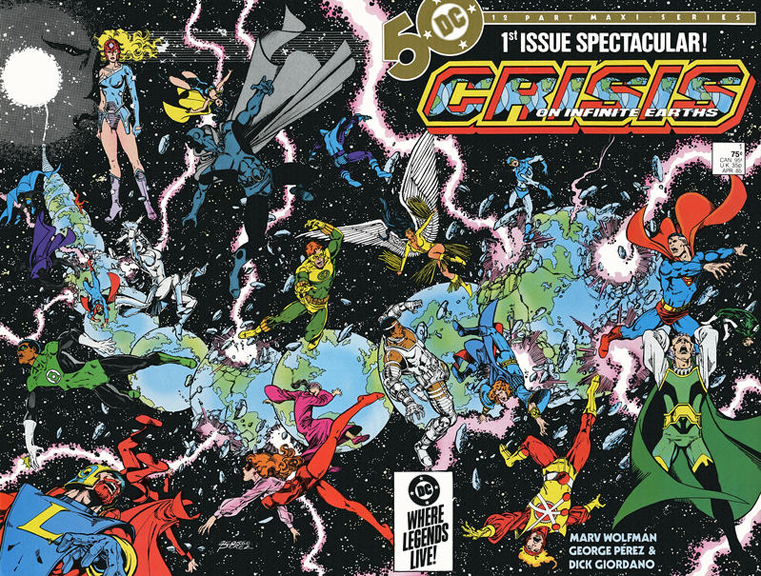
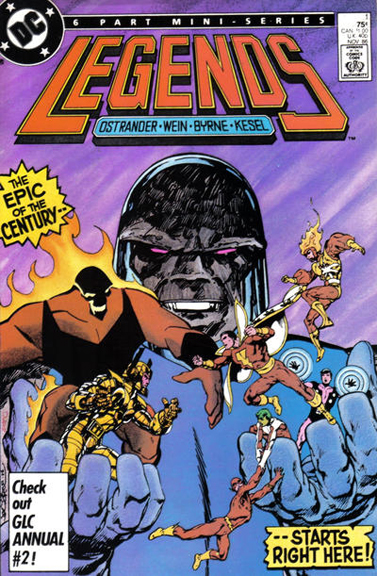
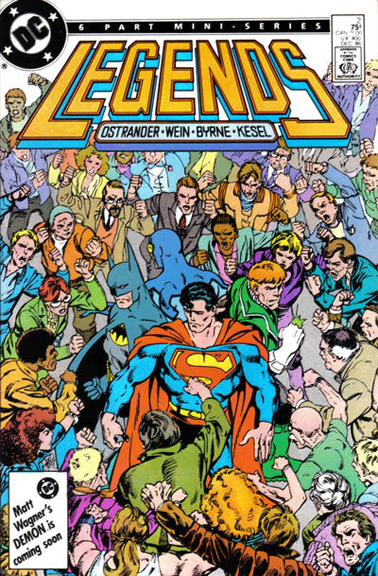
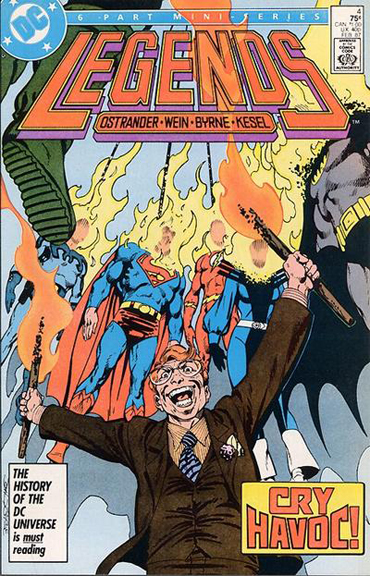
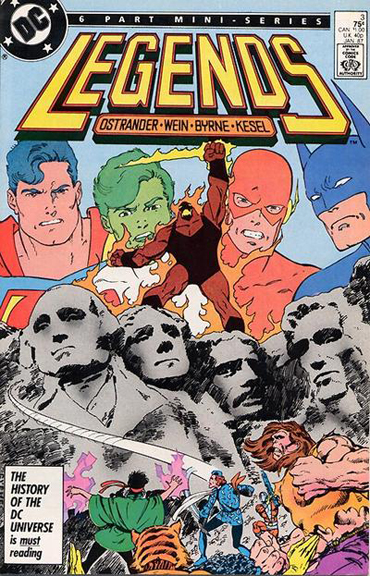
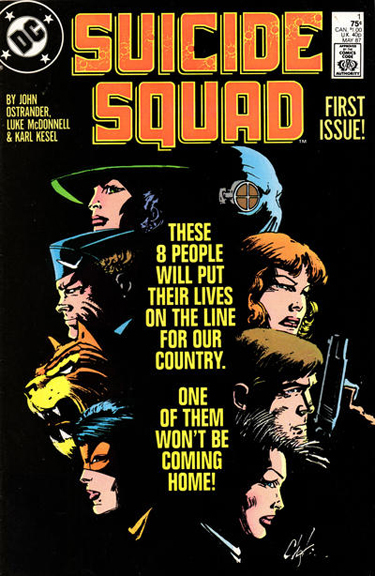
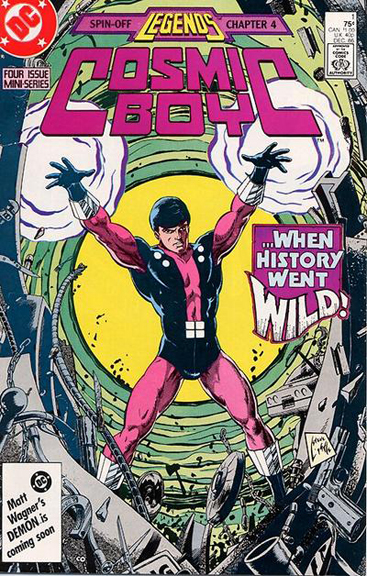
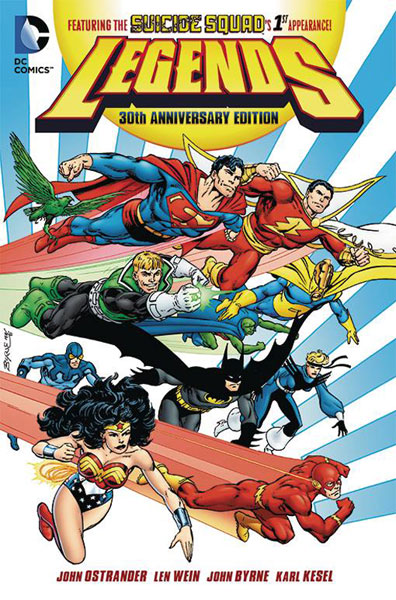
USER COMMENTS
We'd love to hear from you, feel free to add to the discussion!